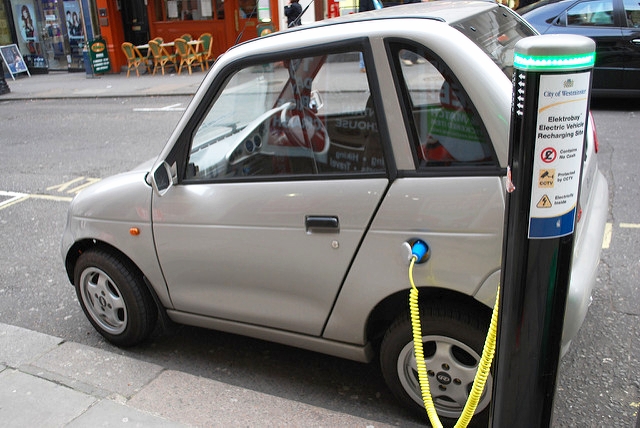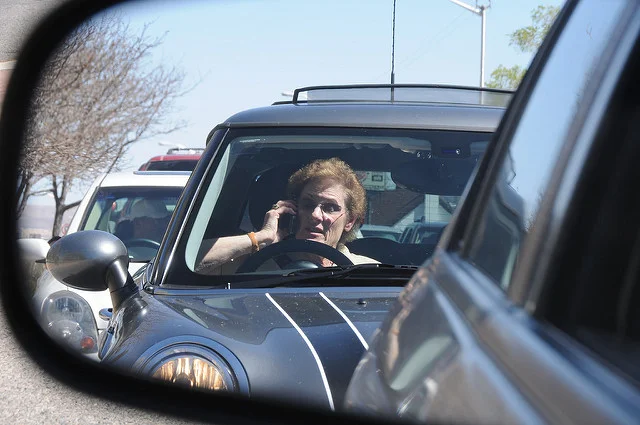In Metro Detroit, the beginning of August means it’s almost that time of year again - time to cruise Woodward Avenue! According to The Detroit Free Press, The Woodward Dream Cruise is, “the world’s biggest one-day car event on the nation’s signature cruising highway, M-1.” For the 24th year, the Woodward Dream Cruise will take place on Saturday August 18, 2018 from 9 AM to 9 PM. Each year, over 1 million Michigan residents and car enthusiasts from across the country head to Metro Detroit to check out, “more than 40,000 muscle cars, street rods, custom, collector and special interest vehicles.”
The Dream Cruise takes place across 16 miles of Woodward Avenue from Ferndale to Pontiac, as reported by Crain’s Detroit. While it’s a day to admire and enjoy vehicles of every model, make, and color, navigating around the Dream Cruise can be highly frustrating for visitors as well as local residents, because of the heavy traffic. Finding nearby parking can also be an equally difficult task for the thousands of individuals that choose to enjoy the Dream Cruise on foot or in a lawn chair along Woodward Avenue. Below are some tips courtesy of The Detroit Free Press, to help drivers stay safe and get the most fun out of the Dream Cruise this year!
Guide to the Woodward Dream Cruise
- Where to park:
- Berkley: Downtown in municipal lots or on side streets adjoining Woodward. No public parking areas near Woodward, no overnight parking.
- Birmingham: Five city parking decks, first two hours free.
- Bloomfield Township: 36700 Woodward for $5.
- Ferndale: Metered city parking lots are metered surrounding downtown at Woodward and Nine Mile Road.
- Huntington Woods: Parking areas on Woodward have been leased by car clubs or reserved for city residents’ activities. No public parking near Woodward.
- Pleasant Ridge: On side streets adjoining Woodward but no public parking areas near Woodward. Overnight parking is not permitted.
- Pontiac: Downtown and surrounding areas.
- Royal Oak: At municipal parking lots in the downtown area and walking distance from Woodward.
- For the best way to get there, take roadways roughly parallel to Woodward Avenue — like Coolidge, Southfield, Crooks, Greenfield and I-75. DON'T try to exit I-696 at Woodward and think you'll get anywhere quickly on Woodward.
- Take a water bottle. It's always hot out there, and the lines can be long even if you have money to spend.
- Wear a hat. What'd we say about the heat? Also apply sunscreen on all family members.
- Go early. People always seem to enjoy watching, and cruising, early in the day. Parking, too, is immensely easier at 7 a.m. than three hours later.
- Stay totally sober. That is, if you plan to drive and don't want to be arrested. The Dream Cruise is crawling with cops. And that's a good thing -- because the event has never had a serious accident or injury, not since it began as a fundraiser for a children's soccer field in 1995. Police from numerous cities will be up and down Woodward, on foot as well as astride motorcycles and inside patrol cars. If you try to imbibe in public, you'll be asked to "pour it out." No drinking is allowed outside the bounds of the cruise strip's bars and restaurants.
The Woodward Dream Cruise shows off how special cars and car culture are in Michigan, the state that is known for its automotive industry. While it’s a weekend full of celebration, it’s important to keep in mind that cars and alcohol do not mix! Spectators can enjoy the event with alcohol, however they should not attempt to drink outside of the surrounding bars and restaurants, nor should they drive while intoxicated. The risk of car accidents and pedestrian accidents occurring will be high with the volume of attendants expected, so even if staying sober, drivers and pedestrians should take cautionary safety measures.
As August 18th approaches, The Michigan Law Firm, PC wants to encourage motor vehicle safety at all times for both spectators and drivers. While it’s a classic Michigan summer event, The Woodward Dream Cruise attracts over 1,000,000 visitors, and their vehicles, to Metro Detroit each year, creating the potential for serious car crashes and pedestrian accidents to occur. In fact, last year during the Woodward Dream Cruise an 18 year old man driving a 2015 Corvette lost control while drag racing and hit a 1954 Chevy pickup. According to Hometown Life, the couple from Ohio who owned the pickup were not hurt, however they were unable to showcase their truck as they had planned. If drivers use caution during the event, these accidents may be prevented. Thankfully, in 24 years there has never been a serious accident or injury occur during the event, but that doesn’t mean that car accidents won’t happen this year. The Woodward Dream Cruise should continue to be an accident-free day dedicated to admiring the thousands of motor vehicle that drive by, from muscle cars to hot rods, and having a great time with family and friends!
There’s something special about motor vehicles that captivates the attention of Michiganders, as well as other individuals across the country. Whether it’s the freedom that a car provides, the intricate detail of each vehicle design, or the wide variety of makes and models, The Woodward Dream Cruise is a day to commemorate everything amazing about cars! But with so many people wanting to join in on the celebration, the risk of car accidents or pedestrian accidents increases. It’s important for drivers and pedestrians to be aware of the risk of car crashes and to make sure to keep their safety and the safety of other visitors in mind. If you or someone you know has been hit with a car or been in a car accident, contact The Michigan Law Firm, PC. Our experienced accident attorneys help car accident victims identify and recover any benefits they may be entitled to under Michigan law. Call us today at 844-844.4MI.FIRM for a free legal consultation.



















































